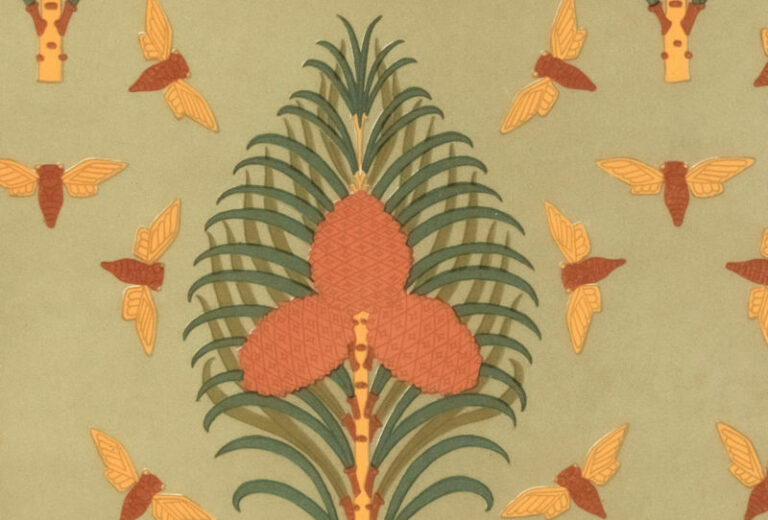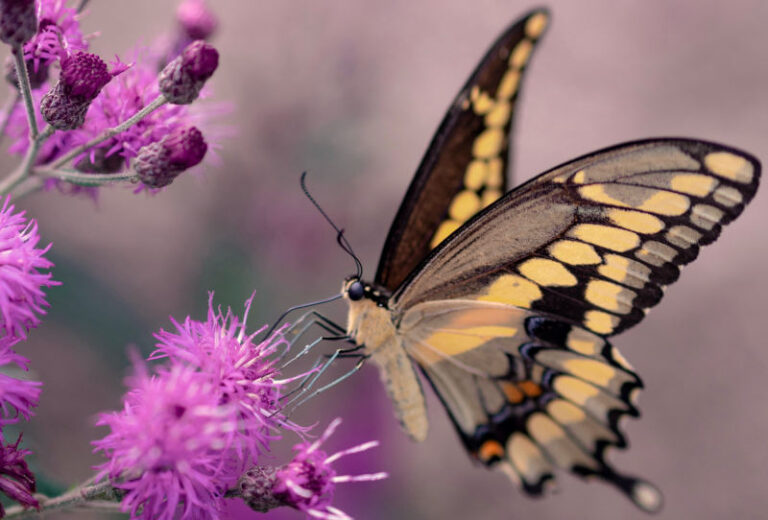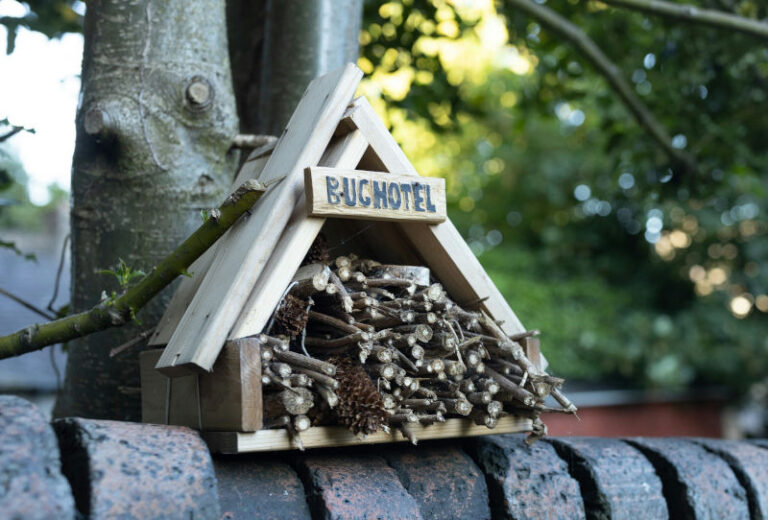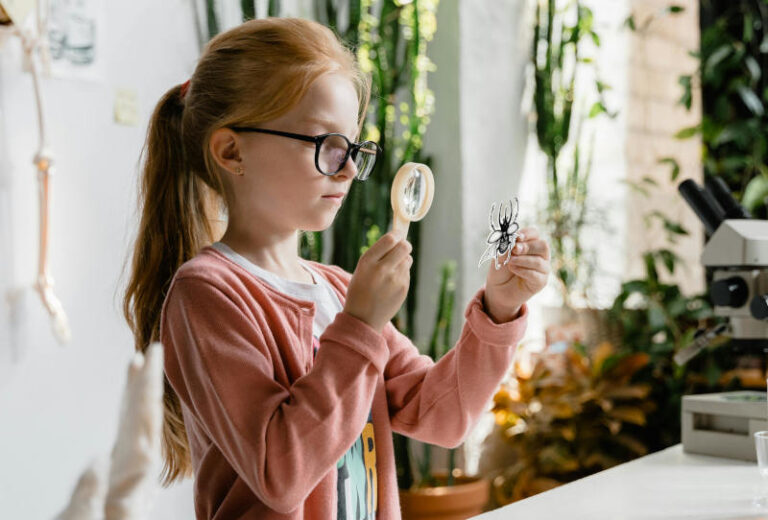Minibeast activities are an exciting and educational way to introduce children in EYFS to the world of insects and other small creatures. These activities can help children develop a deeper understanding of nature, build observational skills, and foster curiosity while meeting key EYFS Areas of Development.
Below is a comprehensive guide to minibeast activities for EYFS, designed to promote exploration, creativity, and early scientific thinking.
Note: For the sake of keeping it simple, assume every activity is linked to Understanding the World (The Natural World)!
Blossom’s Recommended Minibeast Activities for Early Years:
1. Minibeast Hunt and Observation
Take the children on a minibeast hunt in the garden or playground, encouraging them to search for insects like ants, worms, ladybirds, and spiders. Provide magnifying glasses and small containers for closer observation, helping children to explore the different shapes, colours, and movements of the creatures they find.
Encourage children to spot the minibeast differences: big or little, red or yellow, wings or shells etc. There’s a whole wide world of minibeasts out there, and this will help the little ones see what an amazing range there is!
This hands-on experience encourages curiosity, observation, and discussion about the natural world.
EYFS Areas of Learning and Development:
- Communication and Language (Speaking)
- Physical Development (Gross Motor Skills)
2. Minibeast Sensory Bins
Create a sensory bin filled with plastic minibeasts, leaves, soil, and twigs. Let the children explore the textures, mimic how different insects move, and use tools like tweezers to pick up and sort the items.
This activity promotes fine motor skills, sensory development, and imaginative play while encouraging children to discuss what they are finding and feeling.
EYFS Areas of Learning and Development:
- Physical Development (Fine Motor Skills)
- Communication and Language (Speaking)
3. Minibeast Art and Crafts
Set up a craft station where children can create their own minibeasts using materials such as coloured paper, pipe cleaners, googly eyes, and paint. They can make butterflies, bees, or ladybirds, using their creativity to design and decorate.

Consider using play-doh (homemade or otherwise) for the kids creations for reusable, reworkable fun! Long worms are simple, but add a few legs and you’ve got an ant, butterfly’s body with a couple of wings, or go mad with legs and make a centipede! Each thing added is a chance to count, learn and explore.
This activity fosters fine motor skills and allows children to express their artistic abilities while learning about the structure and features of different insects.
EYFS Areas of Learning and Development:
- Expressive Arts and Design (Creating with Materials)
- Physical Development (Fine Motor Skills)
4. Lifecycle of a Butterfly
Introduce children to the lifecycle of a butterfly through storytelling (The Very Hungry Caterpillar by Eric Carle is a good one) or visual aids such as simple diagrams and fun videos. You can follow this up with a practical activity, like observing caterpillars as they turn into butterflies using a butterfly kit in the classroom.

Or go back to the play-doh in idea 3!
This experience brings nature closer to children and reinforces early science concepts such as growth and change.
EYFS Areas of Learning and Development:
- Communication and Language (Listening, Attention and Understanding)
- Literacy (Comprehension)
5. Minibeast-Themed Songs and Rhymes
Teach children songs and rhymes about minibeasts, such as “Itsy Bitsy Spider” or “The Ants Go Marching.” These familiar tunes can help reinforce children’s understanding of minibeasts while also improving their memory and language development.
Adding actions or props to accompany the songs makes the experience even more engaging.
EYFS Areas of Learning and Development:
- Communication and Language (Listening, Attention and Understanding, Speaking)
- Expressive Arts and Design (Being Imaginative and Expressive)
- Literacy (Comprehension)
6. Bug Hotel Building
Encourage children to create their own “bug hotel” using materials like sticks, leaves, and cardboard. These small structures provide a habitat for insects and teach children about the importance of caring for the environment.

Building a bug hotel also helps develop problem-solving skills as children figure out how to construct a space that insects can inhabit. Or they can count and arrange their tubes and sticks in twos, fours, threes and more!
EYFS Areas of Learning and Development:
- Physical Development (Fine Motor Skills)
- Personal, Social, and Emotional Development (Building Relationships)
- Mathematics (Numerical Patterns)
7. Minibeast Sorting and Counting
Use plastic or toy minibeasts for sorting and counting games. Children can sort the creatures by type (e.g., all the beetles, butterflies, etc.) or by colour and size.

This activity introduces early maths concepts such as counting, grouping, and categorisation, while also allowing children to practise their fine motor skills as they manipulate the small items.
EYFS Areas of Learning and Development:
- Mathematics (Numerical Patterns)
- Physical Development (Fine Motor Skills)
- Communication and Language (Speaking)
8. Minibeast Life Cycle Crafts
Help children understand the lifecycle of various minibeasts, such as butterflies or frogs, through simple crafts. For example, the older children could make a paper plate showing the different stages of a butterfly’s life, from egg to caterpillar, chrysalis, and butterfly.
Younger children could explore minibeasts through fingerpainting, with a line of dots for a caterpillar’s body or a butterfly using fully-painted palms placed wrist to wrist on paper (to make wings). You can make loads of insects, bugs and minibeasts with a few dots, lines and circles!
This reinforces early scientific concepts and provides a visual representation of the growth and change process of all sorts of creepy crawlies.
EYFS Areas of Learning and Development:
- Physical Development (Fine Motor Skills)
- Expressive Arts and Design (Building with Materials)
Incorporating minibeast activities for EYFS into your curriculum is an effective way to spark children’s interest in the natural world while supporting key developmental areas such as language, fine motor skills, and early scientific thinking.
These activities encourage hands-on exploration and creativity, making learning about minibeasts both fun and educational.
For more brilliant EYFS activities, check out our Ultimate guide to EYFS activities blog post and easily cover the seven areas of learning and development!